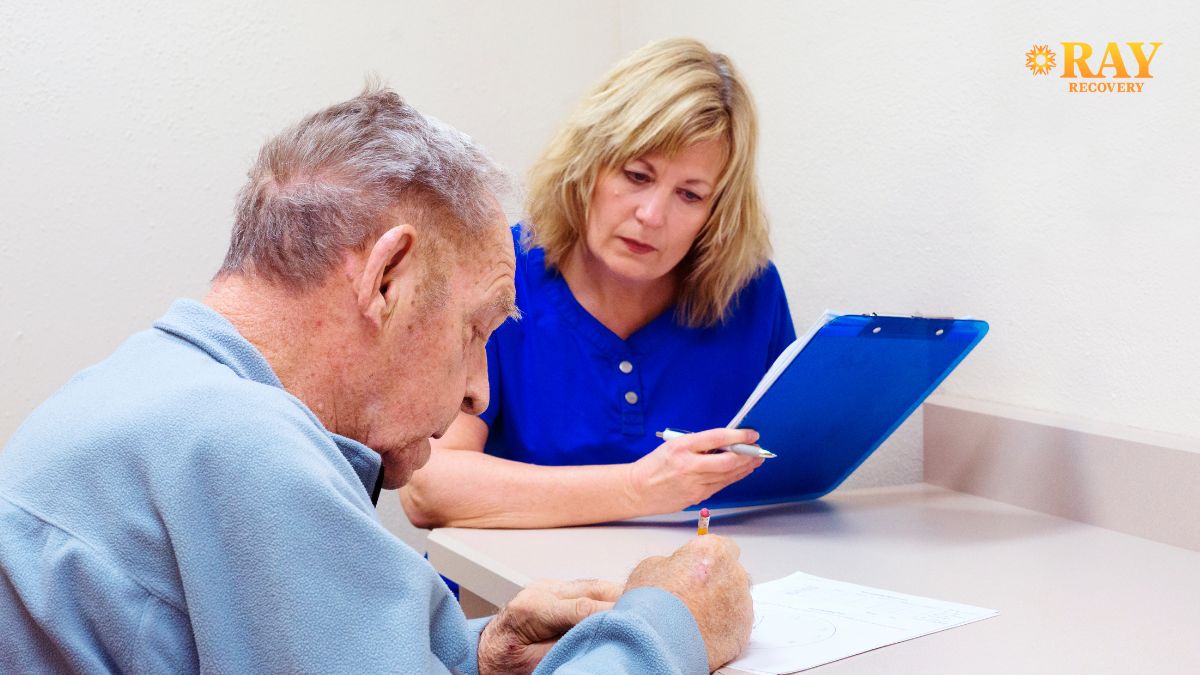Key Points:
- CBT and DBT help people with cocaine addiction manage triggers, reduce cravings, and recover faster from lapses.
- CBT builds awareness of thought-action patterns, while DBT strengthens emotional control and decision-making in high-stress moments.
- Together, they replace urges with planned skills, reduce relapse risk, and support long-term behavior change.
Cocaine cravings hit fast and feel convincing. Triggers show up at work, at home, and in social routines. CBT and DBT break that loop by teaching simple skills you can use on the hardest days. You will see how thoughts, emotions, and choices connect, then practice ways to lower risk, ride out urges, and repair quickly if use happens.
The sections below move from what the therapies are to what to do hour by hour when pressure builds.
What Is Cognitive Behavioral Therapy for Addiction?
Cognitive Behavioral Therapy (CBT) explains how thoughts fuel urges and how small choices compound.
- The therapist and patient track patterns, challenge unhelpful thoughts, and test new actions.
- Sessions focus on skill practice and real-life experiments.
- The goal is less reactivity and more planned action.
CBT tools lean on simple steps:
- You identify risky people, places, and times.
- You write short coping cards for the specific cue.
- You rehearse one or two responses until they feel automatic.
- You log what worked so the next week builds on it.
CBT for cocaine use disorder often pairs with contingency management (rewards for clean tests), peer groups, and medications that target symptoms like anxiety or sleep problems. Many programs use phased goals: stabilization, skills, then maintenance.
One review notes that CBT produces lasting gains for stimulant use when patients rehearse skills between sessions and track progress across months, not days.
Core CBT moves:
- Trigger mapping: List high-risk times and what you feel right before an urge.
- Thought checks: Catch “I can handle one line” and replace it with a tested counter-thought tied to your goals.
- Action plans: Pick one safe behavior per trigger and practice it daily.
CBT for Cocaine Addiction: How It Targets Triggers, Cravings, Relapse
CBT for cocaine addiction turns vague triggers into concrete targets.
You break “bad nights” into steps:
- Who called?
- What did you feel?
- Which thought showed up?
- What came next?
Cravings follow a curve. CBT frames urges as time-limited and survivable.
- You set a timer, breathe, text a support, and move your body.
- You change location and put a barrier between you and the drug.
- You wait the wave out.
The win is measured in minutes at first, then hours. The same playbook applies to surprise cues and planned social events.
CBT also plans for lapses without shame.
- You define the first three calls, the first safe place, and the exact steps to sleep, eat, and reset.
- You write those steps down and keep them where you can see them. Y
- You and your clinician then adjust the plan for the next week.
Skills to apply when cravings spike:
- Delay and breathe: Set a 10-minute clock, slow your breath, and ground with five senses.
- Move and swap: Walk, shower, or drive to a safe space; replace the urge with a short, absorbing task.
- Connect and disclose: Message a peer or counselor with a one-line update and the next skill you will use.
Cocaine risk today often involves fentanyl in the drug supply, which raises overdose danger even for people who do not use opioids. Cocaine-involved overdose deaths in the U.S. rose 85% from 2019 to 2023, reaching 29,449 deaths, largely due to fentanyl in the mix.

Practical Examples of CBT for Addiction (Real-Life Drills)
Examples of CBT for addiction should feel simple and repeatable. Short drills, done daily, train your brain under low stress so they work during high stress.
Ten-minute drills you can start now:
- Urge surfing log: When an urge hits, start a timer and write a 3-line log: cue, thought, action. Do this for three urges per day.
- If-Then cards: “If payday urge hits, then I call Sam and drive to the gym.” Keep two cards in your wallet.
- Trigger rehearsal: Practice saying “I’m out tonight” into a mirror, then text that line to a friend who invites you to use it.
Weekend plan template:
- Friday 4–8 PM: Pre-commit to a safe activity and set a ride home.
- Saturday noon: Meal prep and laundry to reduce idle time.
- Sunday evening: Review the week, list one difficult moment, and update one If-Then card.
CBT progress builds when rewards reinforce clean time. In one randomized trial, patients receiving contingency management earned an average of 2.9 weeks of continuous cocaine abstinence versus 0.6 weeks with testing only. That gap shows how incentives strengthen early change when urges are loud.
Where DBT Fits for Cocaine Use Disorder
Dialectical Behavior Therapy (DBT) adds emotion regulation, distress tolerance, mindfulness, and interpersonal effectiveness. These skills help when anger, shame, or loneliness trigger cocaine use. Many patients report that DBT skills give them something to do with intense feelings in the moment.
DBT programs often include weekly skills groups plus coaching between sessions for crisis moments. The structure helps patients stay engaged while they practice new habits in real time.
Research on DBT for substance use shows better treatment retention and reduced drug use compared with control conditions, especially when skills are practiced daily. In one program, 64% of participants receiving DBT stayed in treatment versus 27% in the comparison group, with greater reductions in use over time.
DBT skills with fast payoff:
- TIP skills: Temperature change (cold face), brief intense exercise, and paced breathing to lower arousal quickly.
- Pros and cons (urge sheet): Write short pros/cons for using versus not using, then read it out loud during an urge.
- DEAR MAN: Script a direct request to set a boundary with someone who pressures you to use.
When you hear “CBT for cocaine use disorder,” think “CBT plus DBT” if emotions or relationships are the main triggers. The mix covers thoughts and feelings while giving you language for tough conversations.
DBT Skills That Lower Cravings and Relapse Risk
DBT treats cravings as body sensations plus meanings. You learn to notice early signals and act before urges crest. You also learn to ride waves without feeding them.
Distress tolerance toolbox:
- STOP: Stop, take a step back, observe, and proceed mindfully when a cue hits.
- Self-soothe: Prepare a kit with scent, sound, and touch items that calm your nervous system.
- One-thing-in-the-moment: Anchor attention on one task until the urge passes.
Emotion regulation basics:
- Check the facts: Challenge stories that magnify stress and make use feel inevitable.
- Opposite action: Do the behavior that fits your goal, not the urge.
- Build mastery: Do one small task well every day to raise a sense of control.
Many communities now offer fentanyl test strips and naloxone. National data show a 4% drop in age-adjusted overdose death rates from 2022 to 2023, but stimulant-involved risks remain high. Keep overdose prevention in your plan even if you use cocaine only.

Building a Relapse Plan That Works in Real Life
A relapse plan treats risk like weather. You expect storms and prepare. The plan names cues, skills, and people who can help fast. It also maps the first 24 hours after any use.
Map four zones:
- Green (low risk): Routine, sleep, meals, and two supports contacted weekly.
- Yellow (rising risk): More urges, less sleep; add a meeting, shorten social time, increase skills drills.
- Orange (high risk): Direct pressure to use; change location, call support, and, if needed, step into an intensive outpatient program for added structure.
- Red (after use): Tell one person, rest, hydrate, return to care within 24 hours, and review what to change.
People and places:
- Peers: One person you can text at any hour.
- Clinician: One message template for “I had a lapse; I am safe; I need a slot.”
- Safe spaces: Library, gym, or family home where using is unlikely.
Add contingency management if available. A 2016 randomized trial with crack cocaine users showed higher abstinence and retention when CM was added to standard care, supporting its use alongside CBT and DBT.
Measuring Progress: Is CBT Effective for Addiction?
CBT tracks outcomes weekly so progress is visible. You monitor negative tests, fewer high-risk hours, and more skill use. You also watch for better sleep, a steadier mood, and repaired relationships, which treatment teams track across partial hospitalization program days and IOP weeks. That mix predicts longer-term stability.
Evidence supports CBT across substance types. A large review found CBT works about as well as other evidence-based therapies and adds value when paired with medications. Gains hold when patients keep practicing skills between sessions and after discharge, which is why therapists assign brief daily drills.
Broader data frame the need for care. In 2023, 0.4% of people aged 12 and above or about 1.3 million, had a cocaine use disorder in the U.S., underscoring the scope of treatment demand and the need for accessible outpatient options.
Signals you are improving:
- Fewer “automatic” yes responses to invitations tied to use.
- Smaller, shorter urges are handled with one or two skills.
- Faster repair after slips with clear next steps and support.
Integrated Care: Meds, Rewards, and Community Supports
CBT and DBT are stronger inside a full plan. Many patients benefit from medication for anxiety, sleep, ADHD, or depression while they learn skills, especially in dual diagnosis care that treats both conditions together. Contingency management rewards early clean time and keeps motivation high.
Build a layered plan:
- Therapy: Weekly CBT for thought-behavior cycles; DBT group for emotion skills.
- Reinforcement: CM vouchers or prizes tied to negative tests.
- Medical care: Evaluation for co-occurring mental health needs; sleep and nutrition support.
- Peer support: Groups that fit your schedule and values.
- Harm reduction: Naloxone access and drug-checking where legal.
SMART designs that adapt care by response can improve outcomes for cocaine use disorder by switching or adding elements as needed. Ask about programs that adjust intensity based on your weekly results rather than using a fixed track.

Frequently Asked Questions
Is CBT good for drug addiction?
CBT is effective for drug addiction by helping people break the cycle between triggers, thoughts, and use. It teaches skills like cognitive restructuring and cue exposure. Studies show CBT improves outcomes across substances, especially when combined with contingency management or peer support for cocaine and other stimulant use.
What are CBT exercises for substance abuse?
CBT exercises for substance abuse include trigger mapping, thought records, craving scales, and cue exposure with response prevention. Behavioral activation replaces risky time with positive activities, and structured problem-solving supports better decisions. Daily practice and weekly therapist reviews help reinforce skills and sustain change between sessions.
What is the cognitive approach to drug addiction?
The cognitive approach to drug addiction targets distorted beliefs that reinforce use, such as “I need it to cope” or “I deserve it.” Therapy challenges these thoughts, replaces them with accurate beliefs, and builds healthier behaviors. DBT skills help manage emotional surges, reducing high-risk moments and speeding recovery from setbacks.
Start a Plan and Get Care That Fits
Cocaine recovery improves when skills meet real life. CBT for cocaine addiction gives you clear steps to defuse triggers and cravings. DBT adds fast tools for moments when emotions spike and choices narrow.
If you live in Ohio and want structured support, outpatient addiction treatment in Ohio, including PHP, IOP, and OP, can give you daily practice and coaching. Dual-diagnosis care and medication-assisted treatment are available for co-occurring needs.
Ray Recovery offers evidence-based care and steady support from assessment to aftercare. Contact us to map your triggers, build your relapse plan, and start practicing skills that hold up under pressure.


